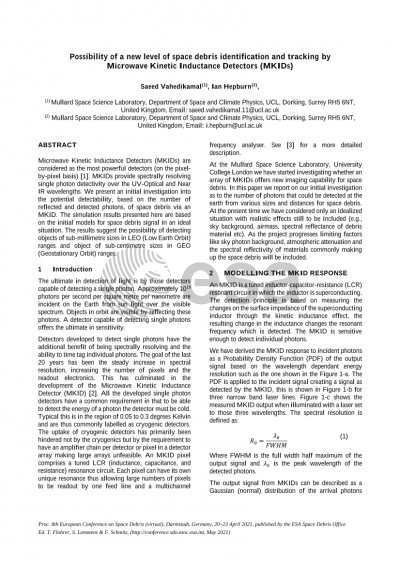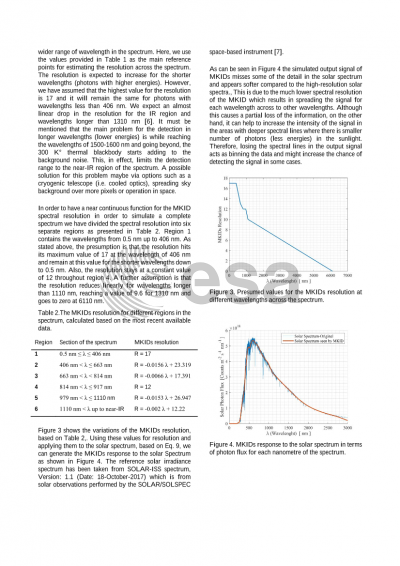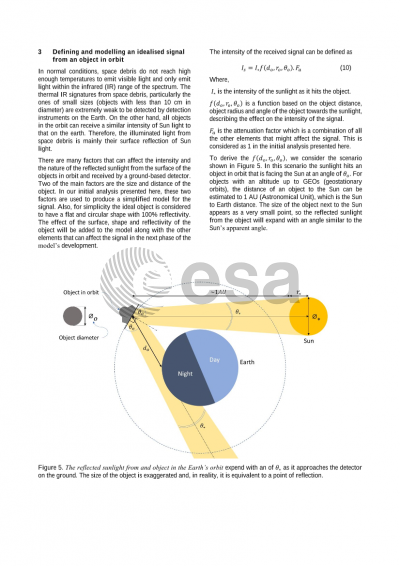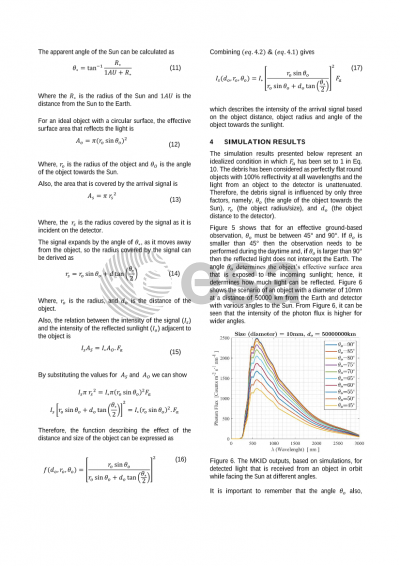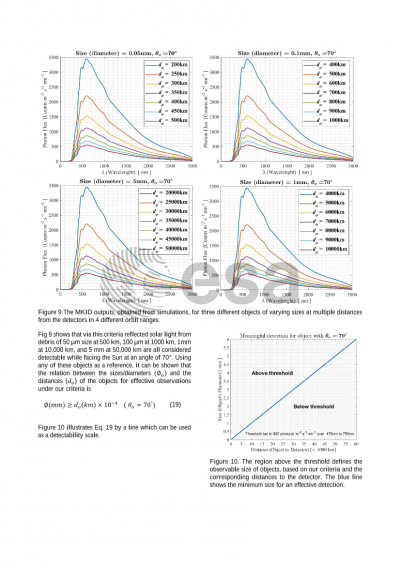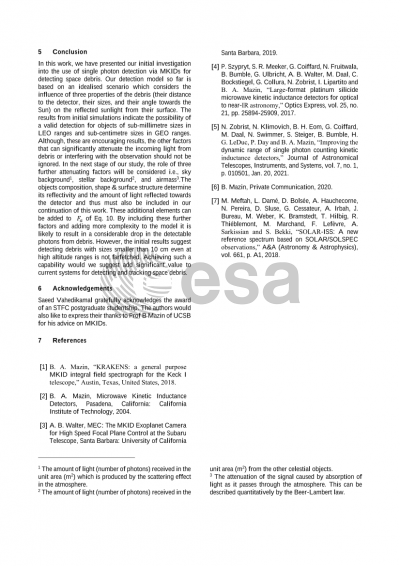Document details

Abstract
Microwave Kinetic Inductance Detectors (MKIDs) are considered as one of the most promising photon detectors of the future in many Astronomical applications such as exoplanet detections. The MKID advantages stem from their single photon sensitivity (ranging from UV to optical and near-infrared), photon energy resolution and high temporal capability (~microseconds). There has been substantial progress in the development of these detectors indicating the future emergence of MKIDs with Megapixel potential in the near future. The unique capability of recording an incident photon and its energy (or wavelength) while also registering its time of arrival to within a microsecond enables an array of MKIDs to produce a four-dimensional data block of x, y, z and t comprising x, y spatial, z axis per pixel spectral and t axis per pixel which is temporal. This offers the possibility that the spectrum and brightness variation for any detected piece of space debris as a function of time might offer a unique identifier or fingerprint. Such a fingerprint signal from any object identified in multiple detections by different observers has the potential to determine the orbital features of the object and be used for their tracking.
We present the results of our initial and on-going feasibility work in simulating the resulting spectra and establishing the detectability, size and distance from Earth for space debris that such a single photon MKID system might provide.
Preview
